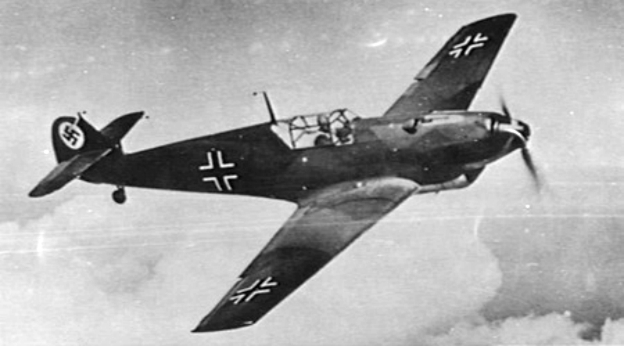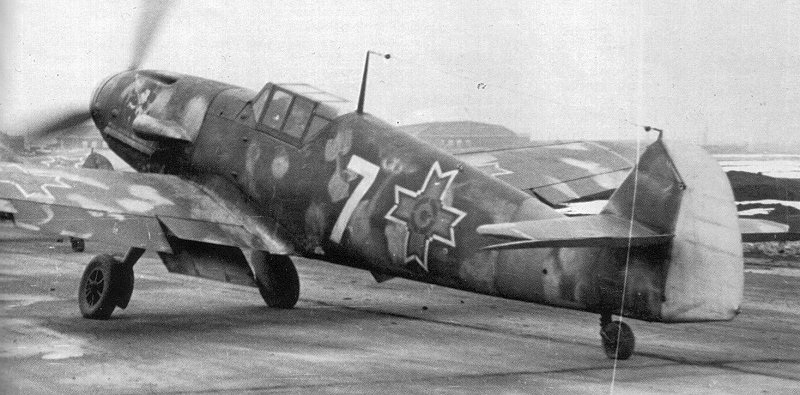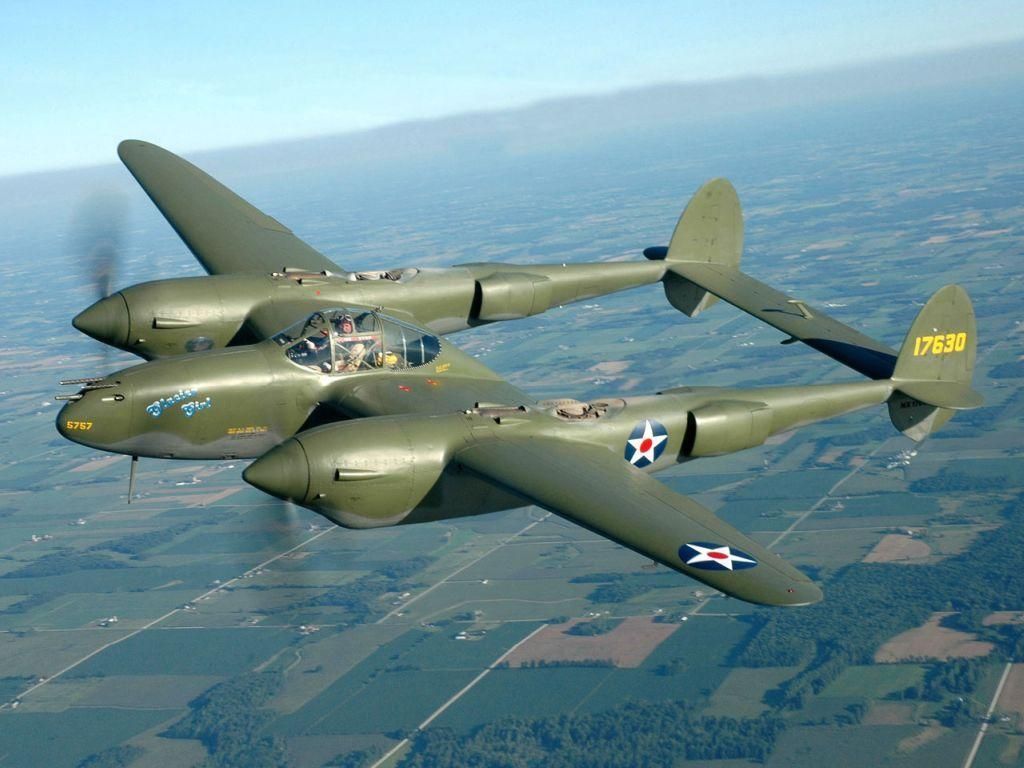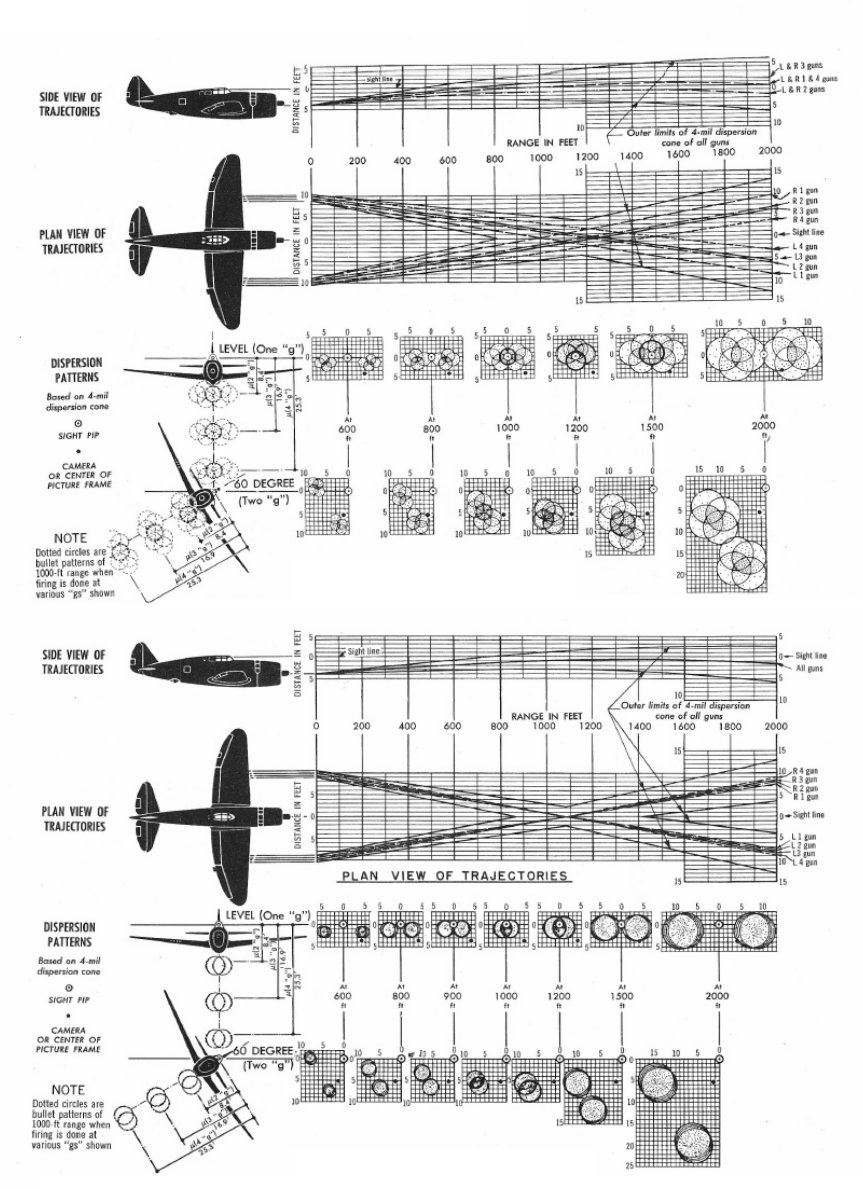The Sandman
ELITE MEMBER

- Joined
- Aug 26, 2015
- Messages
- 8,645
- Reaction score
- 16
- Country
- Location
So i am thinking of starting a series on legendary fighters of WW2 obviously starting with my personal favorite Bf 109.
Bf 109 was the backbone of Luftwaffe till the end of WW2 even during the last few years of war it was on on par with newer versions of Spitfires and P51's over 34,000 were built it had over 9 major variants starting with
B (Bertha), E (Emil), F (Friedrick), G (Gustav), T ( Trager means carrier), H (High altitude), K (Kurfurst), Z (Zwilling) X (not much is known about it).
Background:
In 1933, the Luftwaffe invited BFW (Bayerische Flugzeugwerke) to design a sports plane for an upcoming international air race. Messerschmitt, under tight deadlines, based his new aircraft on the work he had done for the Romanian sports plane. The resulting Bf 108, the forerunner to the 109, flew in February, 1934, with a top speed over 200 MPH. Its performance at the races showed real promise. In 1934, the German Ministry of Aviation RLM (Reichsluftfahrtministerium) issued specifications for a new fighter monoplane to replace the Heinkel He 51 and Arado 68 biplanes.5 It was to be equipped with at least two MG-17 7.9 millimeter machine guns, and to have the capability of utilizing the new 12-cylinder, liquid-cooled, V-engines under development by Junkers and Daimler-Benz. The request was sent to Focke-Wulf, Arado, Heinkel and BFW. Focke-Wulf submitted the Fw 159V1, Arado the Ar 80V1 and Heinkel the He 112. The Bf 109 was the winner in the trials, exceeding its nearest rival, the Heinkel He 112, by 17 mph Only the He 112 provided any other serious competition besides the Bf 109 in the trials and ten pre-production prototypes were ordered for the Heinkel He 112 and Bf 109.
Prototype:
Despite the earlier odds of being issued a contract for a production fighter aircraft, Willy Messerschmitt had been developing the Bf 109A alongside the Bf 108A. The first Bf 109 prototype Bf 109V-1 was ready in August, 1935, Like its predecessor, the Bf 108, it was a low wing, all metal construction monoplane, with flush rivets, leading edge slats, and retractable landing gear. Its single-seat cockpit had a fully enclosed canopy. While none of the developments were revolutionary in 1935, Messerschmitt first put them all together in the Bf 109. Powered by a 695 HP twelve cylinder Rolls-Royce Kestrel engine, the Bf 109V-1 first flew in September 1935. At first, the Luftwaffe pilots, from Ernst Udet on down, distrusted the aircraft. its narrow track landing gear was prone to failure (which plagued 109 till the end of it's career). But its speed and agility impressed the Luftwaffe skeptics even Udet came around to support the plane.
The V-3, the third prototype, was the first Bf 109 to be armed, carrying two 7.9mm MG17 machine guns and 1000 rounds of ammunition, as called for in the RLM spec. Throughout the 1936 trials, the BFW fighter looked better and better, prompting the RLM to order ten Bf 109s. Udet's stunning performance in a Bf 109 at the Rechlin air show confirmed the decision. In front of Generalfeldmarschall Goering and other Luftwaffe brass, Udet intercepted four He 51s in a mock air battle, "destroyed" them, and then turned on a force of bombers and "destroyed" them as well. In November 1936, the Bf 109V-4 flew. It mounted a third machine gun in the nose and otherwise resembled the V-3. With production now guaranteed, BFW finished the prototyping with two more airplanes: the Bf 109V-5 and the Bf 109V-6, both equipped with an improved Jumo 210B engine. Germans sent last 3 pre-production 109's to Seville in December 1936.
Bf 109 B (Bertha): (The first Bf 109 in serial production)
BF 109 B2

The RLM had ordered 30 production aircraft, designated the Bf 109B. Carrying the latest 680 HP Jumo 210D engine, a wooden two-bladed prop, and only two cowling-mounted guns. The 109B began to be delivered in February 1937. These too were promptly shipped to Spain. At low altitudes, the maneuverable Russian Polikarpov I-15s and I-16s danced around the 109s; the Condor Legion pilots quickly learned to stay at high altitudes. To augment BFW’s factories, the Fieseler company began license-production at the end of 1937. An improved, metal, variable pitch propeller, licensed by Hamilton Standard, was used in the later Bertha’s, as the Bf 109B was nicknamed. 700 HP Jumo 210G and 210Ga engines with fuel injection and two stage superchargers, powered the next development prototypes, the Bf 109V-7 and Bf 109V-8, respectively. Significantly, the V-8 carried four 7.9mm machine guns. While still equipped with the relatively light rifle-caliber weapons, at this point the Bf 109 began to resemble the heavily armed fighters of WW2. A V-9 variant carried 20mm cannons in the wings, but they proved unreliable.
The Spanish Civil War:
130-140 Messerschmitt Bf 109’s served in Spain: approximately 4 prototypes, 40+ Berthas, 5 Claras, 35 Doras, and 44 Emils. By early 1939, when the 109E’s arrived, the Republican opposition had nearly collapsed; twenty of these models were left behind for Spain’s air force. Spain Bf 109 pilots like Werner Moelders and Wolfgang Schellmann distinguished themselves in Spain. Moelders is credited with developing the “finger four” formation, which became the standard fighter formation for decades. Moelders scored 14 kills in Spain, the top German ace of that conflict. Over 200 German pilots flew with the Condor Legion, gaining precious combat experience that would serve them well in WW2.
Note: though E variant was the first truly mass produced variant but i would post the background of F variant because it showed major improvements and redesign of some critical parts.
Bf 109 E3

Bf 109 F: (Friedrich)

Early in 1940, Messerschmitt designed a major improvement to the Bf 109. The "F" model was planned to include structural and aerodynamic changes and a higher performance powerplant, the 1350 horsepower DB 601E. By tucking the radiators more tightly into the wings, the designers reduced drag and improved lift. The cowling was streamlined, the spinner enlarged, the propeller blades widened and shortened, the wingtips rounded, and the tail plane bracing struts removed. F variant included two 7.9mm cowling mounted MG's and a 20mm cannon firing through propeller hub. Based on reports this type of concentrated firepower proved much more effective. Deliveries of the Bf 109F-1, still powered by the DB 601N due to delays in the 601E, began in November 1940. The Bf 109F-2, introduced in February 1941 differed from the F-1 only in an improved MG 151 15 millimeter cannon. When Operation Barbarossa began in June 1941, the Friedrich was the Luftwaffe's frontline fighter; it had a field day against obsolete Soviet planes like the Polikarpov I-16. Finally in 1942, the DB 601E was installed in the Bf 109F-3 and the Bf 109F-4.
The F-4 was the ultimate Friedrich; it weighed 6,880 pounds, made 390 MPH at altitude, with a service ceiling of 39,400 feet. Several subvariants and modifications of the F-4 were built, notably the F-4/R6 which (at the insistence of Adolph Galland, fitted an extra pair of 20mm cannon in underwing gondolas. The plane's handling was adversely affected and they were limited to bomber interceptor roles. Another notable modification was the Bf 109F-4/Trop, which Hans Joachim Marseilles used to achieve most of his 158 victories in North Africa. About 2,200 Friedrichs were built.
Bf 109 F4 with gondolas

Experimental Bf 109s:
In its long life, the Bf 109 served as a platform for numerous experimental and radical ideas. A carrier version, the Bf 109T, actually reached production, 40 being built. After the cancellation of the German carriers, Peter Strasser and Graf Zeppelin, the Bf 109T’s were assigned to Norway and Heligoland, where their short take-off capabilities were useful. A jet version, the Bf 109TL, was considered, as was a twin fuselage design, the Bf 109Z. The “Mistel” scheme mated a Bf 109 to a worn-out, pilotless Ju 88, which was packed with explosives. The Messerschmitt pilot flew the joined aircraft to the target and released the Ju 88, a primitive cruise missile.
BF 109Z

Specs of Bf 109 F4 variant
Weight (Empty/Loaded/Max): 5,523lb / 6,063lb / 6,392lb
Wing Area: 173 sq ft
Wing Loading: 31.9lb/sq ft / 35.0lb/sq ft / 36.9lb/sq ft
Length: 29' 4"
Span: 32' 7"
Wing Aspect: 6.1
Engine: 1350hp Daimler Benz DB 601E Inline
Flaps: 5 settings
Guns
Primary: 2x7.9mm Rheinmetall MG 17 MG
Secondary: 1x20mm Mauser MG 151/20 Cannon
Speed: 265mph
you can read in more detail here.
Pics of Bf 109 during production



Sources
1
2
Wanted to include the names of a few aces like Erich Hartmann but eh will leave it for other topic.
@Hell hound @django @Desert Fox @Vergennes @Zaki
Bf 109 was the backbone of Luftwaffe till the end of WW2 even during the last few years of war it was on on par with newer versions of Spitfires and P51's over 34,000 were built it had over 9 major variants starting with
B (Bertha), E (Emil), F (Friedrick), G (Gustav), T ( Trager means carrier), H (High altitude), K (Kurfurst), Z (Zwilling) X (not much is known about it).
Background:
In 1933, the Luftwaffe invited BFW (Bayerische Flugzeugwerke) to design a sports plane for an upcoming international air race. Messerschmitt, under tight deadlines, based his new aircraft on the work he had done for the Romanian sports plane. The resulting Bf 108, the forerunner to the 109, flew in February, 1934, with a top speed over 200 MPH. Its performance at the races showed real promise. In 1934, the German Ministry of Aviation RLM (Reichsluftfahrtministerium) issued specifications for a new fighter monoplane to replace the Heinkel He 51 and Arado 68 biplanes.5 It was to be equipped with at least two MG-17 7.9 millimeter machine guns, and to have the capability of utilizing the new 12-cylinder, liquid-cooled, V-engines under development by Junkers and Daimler-Benz. The request was sent to Focke-Wulf, Arado, Heinkel and BFW. Focke-Wulf submitted the Fw 159V1, Arado the Ar 80V1 and Heinkel the He 112. The Bf 109 was the winner in the trials, exceeding its nearest rival, the Heinkel He 112, by 17 mph Only the He 112 provided any other serious competition besides the Bf 109 in the trials and ten pre-production prototypes were ordered for the Heinkel He 112 and Bf 109.
Prototype:
Despite the earlier odds of being issued a contract for a production fighter aircraft, Willy Messerschmitt had been developing the Bf 109A alongside the Bf 108A. The first Bf 109 prototype Bf 109V-1 was ready in August, 1935, Like its predecessor, the Bf 108, it was a low wing, all metal construction monoplane, with flush rivets, leading edge slats, and retractable landing gear. Its single-seat cockpit had a fully enclosed canopy. While none of the developments were revolutionary in 1935, Messerschmitt first put them all together in the Bf 109. Powered by a 695 HP twelve cylinder Rolls-Royce Kestrel engine, the Bf 109V-1 first flew in September 1935. At first, the Luftwaffe pilots, from Ernst Udet on down, distrusted the aircraft. its narrow track landing gear was prone to failure (which plagued 109 till the end of it's career). But its speed and agility impressed the Luftwaffe skeptics even Udet came around to support the plane.
The V-3, the third prototype, was the first Bf 109 to be armed, carrying two 7.9mm MG17 machine guns and 1000 rounds of ammunition, as called for in the RLM spec. Throughout the 1936 trials, the BFW fighter looked better and better, prompting the RLM to order ten Bf 109s. Udet's stunning performance in a Bf 109 at the Rechlin air show confirmed the decision. In front of Generalfeldmarschall Goering and other Luftwaffe brass, Udet intercepted four He 51s in a mock air battle, "destroyed" them, and then turned on a force of bombers and "destroyed" them as well. In November 1936, the Bf 109V-4 flew. It mounted a third machine gun in the nose and otherwise resembled the V-3. With production now guaranteed, BFW finished the prototyping with two more airplanes: the Bf 109V-5 and the Bf 109V-6, both equipped with an improved Jumo 210B engine. Germans sent last 3 pre-production 109's to Seville in December 1936.
Bf 109 B (Bertha): (The first Bf 109 in serial production)
BF 109 B2

The RLM had ordered 30 production aircraft, designated the Bf 109B. Carrying the latest 680 HP Jumo 210D engine, a wooden two-bladed prop, and only two cowling-mounted guns. The 109B began to be delivered in February 1937. These too were promptly shipped to Spain. At low altitudes, the maneuverable Russian Polikarpov I-15s and I-16s danced around the 109s; the Condor Legion pilots quickly learned to stay at high altitudes. To augment BFW’s factories, the Fieseler company began license-production at the end of 1937. An improved, metal, variable pitch propeller, licensed by Hamilton Standard, was used in the later Bertha’s, as the Bf 109B was nicknamed. 700 HP Jumo 210G and 210Ga engines with fuel injection and two stage superchargers, powered the next development prototypes, the Bf 109V-7 and Bf 109V-8, respectively. Significantly, the V-8 carried four 7.9mm machine guns. While still equipped with the relatively light rifle-caliber weapons, at this point the Bf 109 began to resemble the heavily armed fighters of WW2. A V-9 variant carried 20mm cannons in the wings, but they proved unreliable.
The Spanish Civil War:
130-140 Messerschmitt Bf 109’s served in Spain: approximately 4 prototypes, 40+ Berthas, 5 Claras, 35 Doras, and 44 Emils. By early 1939, when the 109E’s arrived, the Republican opposition had nearly collapsed; twenty of these models were left behind for Spain’s air force. Spain Bf 109 pilots like Werner Moelders and Wolfgang Schellmann distinguished themselves in Spain. Moelders is credited with developing the “finger four” formation, which became the standard fighter formation for decades. Moelders scored 14 kills in Spain, the top German ace of that conflict. Over 200 German pilots flew with the Condor Legion, gaining precious combat experience that would serve them well in WW2.
Note: though E variant was the first truly mass produced variant but i would post the background of F variant because it showed major improvements and redesign of some critical parts.
Bf 109 E3

Bf 109 F: (Friedrich)

Early in 1940, Messerschmitt designed a major improvement to the Bf 109. The "F" model was planned to include structural and aerodynamic changes and a higher performance powerplant, the 1350 horsepower DB 601E. By tucking the radiators more tightly into the wings, the designers reduced drag and improved lift. The cowling was streamlined, the spinner enlarged, the propeller blades widened and shortened, the wingtips rounded, and the tail plane bracing struts removed. F variant included two 7.9mm cowling mounted MG's and a 20mm cannon firing through propeller hub. Based on reports this type of concentrated firepower proved much more effective. Deliveries of the Bf 109F-1, still powered by the DB 601N due to delays in the 601E, began in November 1940. The Bf 109F-2, introduced in February 1941 differed from the F-1 only in an improved MG 151 15 millimeter cannon. When Operation Barbarossa began in June 1941, the Friedrich was the Luftwaffe's frontline fighter; it had a field day against obsolete Soviet planes like the Polikarpov I-16. Finally in 1942, the DB 601E was installed in the Bf 109F-3 and the Bf 109F-4.
The F-4 was the ultimate Friedrich; it weighed 6,880 pounds, made 390 MPH at altitude, with a service ceiling of 39,400 feet. Several subvariants and modifications of the F-4 were built, notably the F-4/R6 which (at the insistence of Adolph Galland, fitted an extra pair of 20mm cannon in underwing gondolas. The plane's handling was adversely affected and they were limited to bomber interceptor roles. Another notable modification was the Bf 109F-4/Trop, which Hans Joachim Marseilles used to achieve most of his 158 victories in North Africa. About 2,200 Friedrichs were built.
Bf 109 F4 with gondolas

Experimental Bf 109s:
In its long life, the Bf 109 served as a platform for numerous experimental and radical ideas. A carrier version, the Bf 109T, actually reached production, 40 being built. After the cancellation of the German carriers, Peter Strasser and Graf Zeppelin, the Bf 109T’s were assigned to Norway and Heligoland, where their short take-off capabilities were useful. A jet version, the Bf 109TL, was considered, as was a twin fuselage design, the Bf 109Z. The “Mistel” scheme mated a Bf 109 to a worn-out, pilotless Ju 88, which was packed with explosives. The Messerschmitt pilot flew the joined aircraft to the target and released the Ju 88, a primitive cruise missile.
BF 109Z

Specs of Bf 109 F4 variant
Weight (Empty/Loaded/Max): 5,523lb / 6,063lb / 6,392lb
Wing Area: 173 sq ft
Wing Loading: 31.9lb/sq ft / 35.0lb/sq ft / 36.9lb/sq ft
Length: 29' 4"
Span: 32' 7"
Wing Aspect: 6.1
Engine: 1350hp Daimler Benz DB 601E Inline
Flaps: 5 settings
Guns
Primary: 2x7.9mm Rheinmetall MG 17 MG
Secondary: 1x20mm Mauser MG 151/20 Cannon
Speed: 265mph
you can read in more detail here.
Pics of Bf 109 during production



Sources
1
2
Wanted to include the names of a few aces like Erich Hartmann but eh will leave it for other topic.
@Hell hound @django @Desert Fox @Vergennes @Zaki
Last edited:













